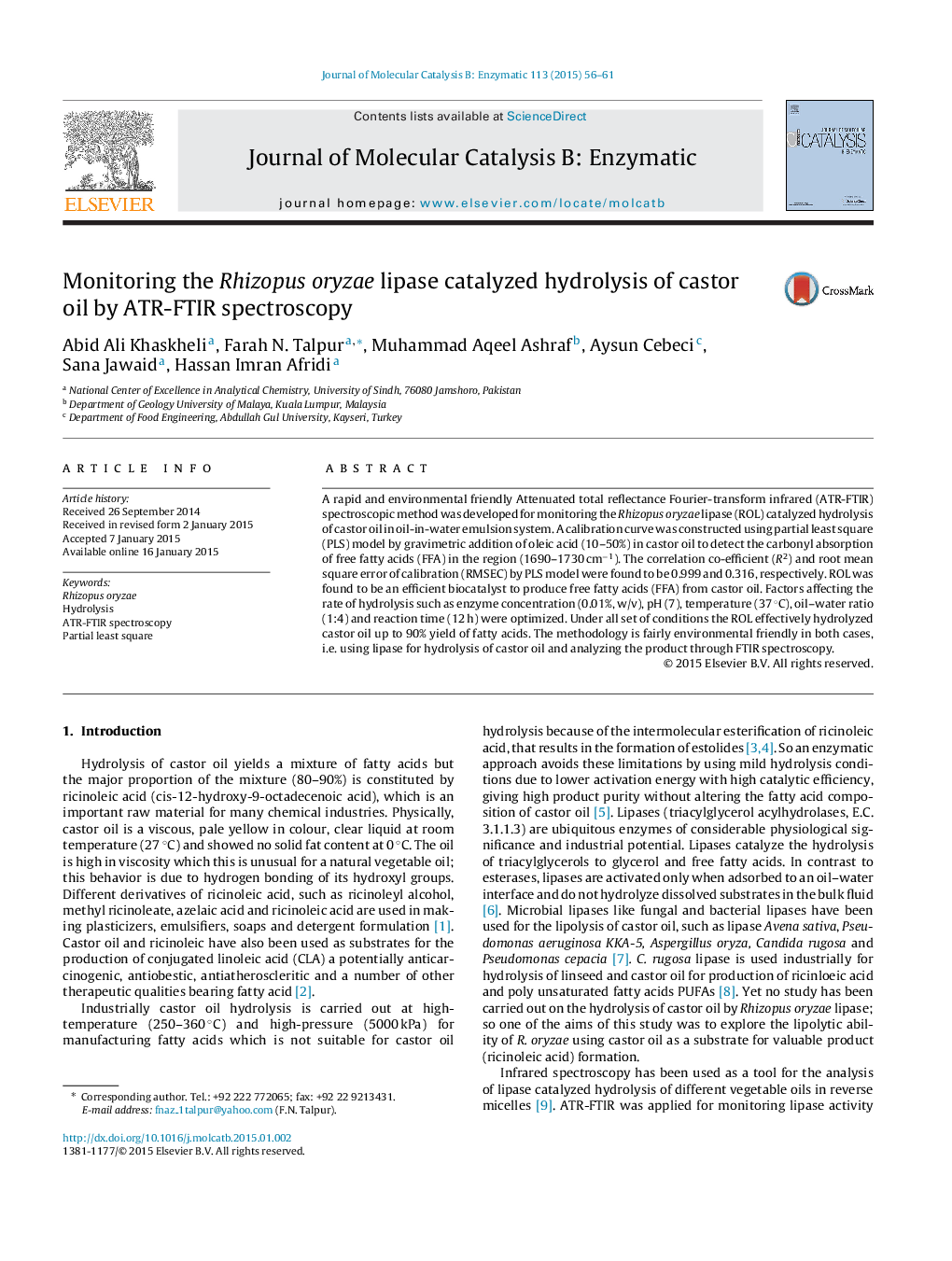| Article ID | Journal | Published Year | Pages | File Type |
|---|---|---|---|---|
| 69408 | Journal of Molecular Catalysis B: Enzymatic | 2015 | 6 Pages |
•Rhizopus oryzae lipase efficiently hydrolyzed castor oil at ambient conditions.•A high yield of FFA 90% was achieved at only 0.01% (w/v) enzyme dose.•First time ATR-FTIR spectroscopy used to quantify lipolytic activity of castor oil.•FTIR method showed better performance from chemical method of FFA analysis.
A rapid and environmental friendly Attenuated total reflectance Fourier-transform infrared (ATR-FTIR) spectroscopic method was developed for monitoring the Rhizopus oryzae lipase (ROL) catalyzed hydrolysis of castor oil in oil-in-water emulsion system. A calibration curve was constructed using partial least square (PLS) model by gravimetric addition of oleic acid (10–50%) in castor oil to detect the carbonyl absorption of free fatty acids (FFA) in the region (1690–1730 cm−1). The correlation co-efficient (R2) and root mean square error of calibration (RMSEC) by PLS model were found to be 0.999 and 0.316, respectively. ROL was found to be an efficient biocatalyst to produce free fatty acids (FFA) from castor oil. Factors affecting the rate of hydrolysis such as enzyme concentration (0.01%, w/v), pH (7), temperature (37 °C), oil–water ratio (1:4) and reaction time (12 h) were optimized. Under all set of conditions the ROL effectively hydrolyzed castor oil up to 90% yield of fatty acids. The methodology is fairly environmental friendly in both cases, i.e. using lipase for hydrolysis of castor oil and analyzing the product through FTIR spectroscopy.
Graphical abstractFigure optionsDownload full-size imageDownload as PowerPoint slide
